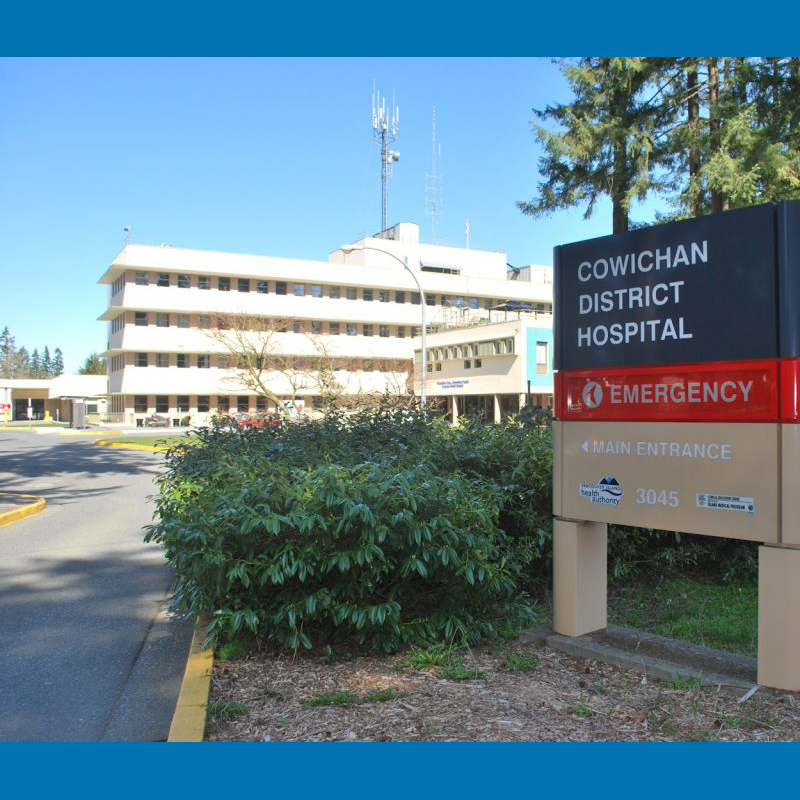
“It is the responsibility of every health care provider to respond to the myriad voices of Indigenous patients, researchers, and health care workers that have been calling for reform and reconciliation in health care. Be humble, listen to and learn from Indigenous voices, start small, build relationships, and start moving towards culturally safer care.” – Dr Ava Butler
Engaging Indigenous community members to inform improvements
In the fall of 2023, Dr Ava Butler, emergency room physician, met with Elders and Indigenous nations' community members for whom the Cowichan District Hospital is the closest to their traditional territories, and to the Cowichan Valley Metis nation. The group also included an away-from-home Indigenous person.
The purpose of this meeting was to learn about Indigenous experiences and concerns when accessing care in the Cowichan District Hospital (CDH) Emergency Department (ED) in Duncan.
Several themes emerged:
- Indigenous participants shared stories of interpersonal racism and stereotyping they or their family members had encountered in the ED.
- Participants expressed their lack of trust in the ED and highlighted how a history with residential schools affected their experience of care.
- They shared challenges with ED processes including triage, communication and discharge, and a lack of culturally safe spaces and practices within the ED.
Indigenous participants identified several wise practises as potential areas of change to improve cultural safety in the CDH ED.
Cultural safety training as a foundation for change
The group also discussed the need for ongoing cultural education for staff and physicians.
In response, Dr Butler arranged for an interdisciplinary Indigenous-Specific Anti-Racism Training (ISART) course from the UVic Physician Education Program to be offered in the Cowichan Valley for CDH ED staff.
Twenty ED providers participated, including ten physicians whose participation was funded by the Cowichan District Medical Society (CDMS) and Facility Engagement, a joint initiative of Doctors of BC and the Government of BC.
Two-day online training offered an opportunity for providers to thoroughly examine Indigenous-specific racism in ED-relevant situations and its impact, the effects of colonization, and identify ways to approach biases and racist behaviour when providing care. It included:
- A two-day online component, led by Rain Daniels, an Anishinaabekwe educator, and Chelsey Branch, a White settler educator.
- A half-day in-person session that followed, where providers participated in simulated scenarios of racism in emergency care, with Indigenous standardized patients and other health care providers offering constructive feedback on how to improve. (A standardized patient is a person trained to portray patient concerns and experiences in an interactive teaching environment.)
Measuring Indigenous patient experiences
Dr Butler wanted to measure change in how Indigenous people experienced care in the ED, to guide further education and improvements.
She used an existing Dynamic Analysis and Reporting Tool (DART) survey to make providing feedback easier for patients. She felt it was important to avoid increasing any burden on Indigenous patients accessing care. Through it, patients are asked:
- Overall, on a scale of 0 to 10, do you feel you were helped by your visit to the emergency department (ED)?
- During this ED visit, were you involved as much as you wanted in decisions about your care and treatment?
- During this ED visit, did you feel you could refuse treatment, medicine, tests or referrals?
- During this ED visit, did you have trust in the doctor(s) treating you?
- During this ED visit, did you have trust in the nurse(s) treating you?
- Did you feel you were treated unfairly by ED staff due to your race or cultural background?
Dr Butler compared the DART responses of self-identified Indigenous patients to self-identified non-Indigenous patients receiving ED care between January and March 2024 and the same period in 2023.
While robust results were limited by the short time frame for providers to implement learning and a small sample size of 11 Indigenous patients, the survey identified some valuable strengths, gaps, and trends to be monitored over time – and to inform further engagement with Indigenous community members to improve cultural safety in the facility.
Effective measurement is key for achieving cultural safety
Dr Butler emphasizes that effective measurement that holds the health care system accountable while minimizing the burden on Indigenous patients, is key to removing barriers to understanding effective change in improving cultural safety.
MSAs are invited to share tools and learning here for measuring Indigenous patient experiences through your cultural safety projects or with health authority Indigenous health teams.
Looking for resources to support your own engagement efforts?
Check out the Doctors of BC Guide for Respectful Indigenous Engagement to support divisions, MSAs, and physician members in their work with First Nations, Métis, and Inuit.
![]()



